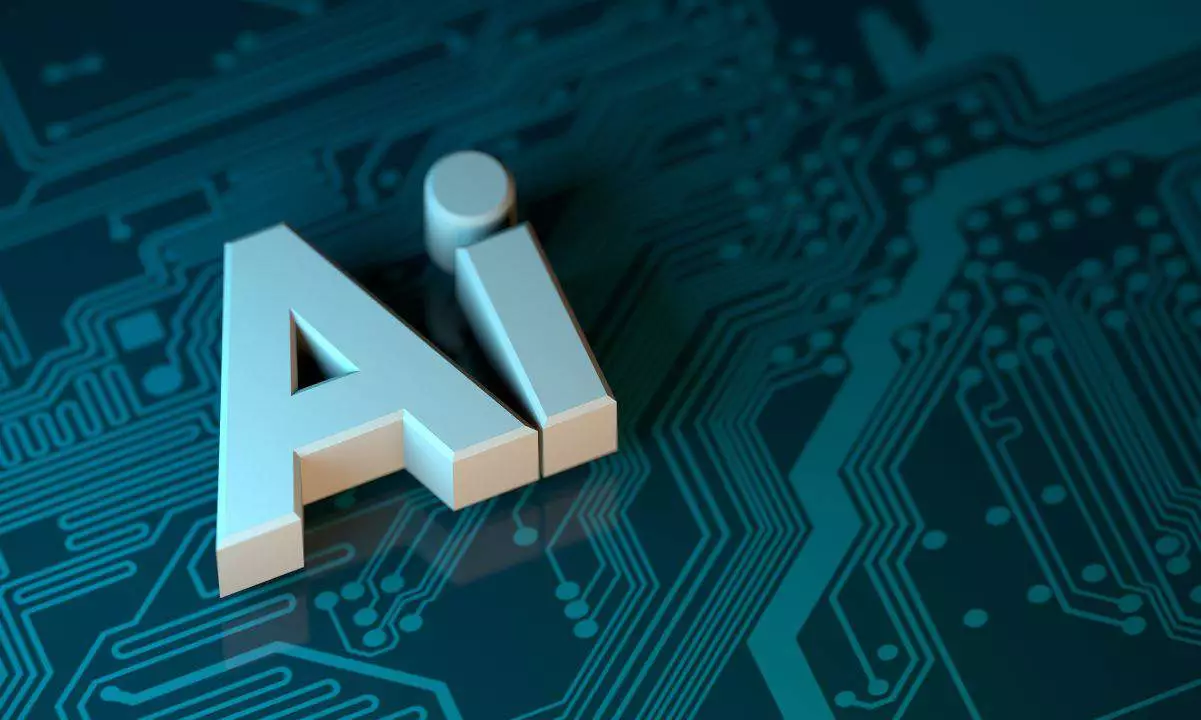In the rapidly evolving world of cryptocurrency, a new and unconventional player is gaining traction: Artificial Intelligence (AI) tokens. Over the past year, this niche market has manifested itself dramatically, with 20 distinct AI-driven tokens collectively amassing a market capitalization of nearly $20 billion. While this figure may seem relatively negligible—constituting just 0.67% of the entire crypto landscape—it hints at an emerging tide that could reshape the financial world as we know it.
One must approach this data with a critical lens. While the Financials sector boasts a robust market cap exceeding $519 billion, the AI crypto sector remains in its infancy. This disparity underscores the clear potential for growth in this space, as indicated by analysts at Grayscale. They posit that the underdeveloped state of AI tokens is both a current limitation and a future opportunity, paving the way for exponential growth as these projects mature.
Transformational Potential
The journey of AI tokens from meek beginnings to a more substantial presence in the crypto market is nothing short of astonishing. Just two years earlier in 2023, these tokens had a scant market valuation of only $4.5 billion. Fast forward to today, and we witness a staggering increase of fourfold, signaling a shift in investor sentiment and technological advancement.
Some might scoff at the notion that a meager 2% increase in TAO’s price represents “success” within this burgeoning field. Yet, it’s essential to recognize that TAO, being the frontrunner, is symptomatic of broader trends. Furthermore, ElizaOS’s abysmal 80% loss cautions investors about the volatility inherent to emerging technology sectors; however, it also teaches a critical lesson in due diligence and risk management.
The Stablecoin Paradigm Shift
As we dissect the potential for AI tokens, it’s impossible to overlook the role of stablecoins, a bridge to integrating these digital assets into mainstream use. Grayscale posits that stablecoins may evolve into key tools for powering AI agents, thanks to their programmability and efficiency in transactions. The influx of institutional players such as Stripe, Meta, and traditional banks adapting to improving regulatory landscapes underlines the grave potential for stablecoins to forge a new network of digital finance where AI tokens could thrive.
This integration is further emphasized by Coinbase’s introduction of a stablecoin-ready payments standard, indicating a direction that brings less volatility into the equations that AI-powered solutions leverage. This is no small feat; regulatory development like the anticipated crypto market structure and GENIUS stablecoin bills could propel the adoption of these innovative technologies into even higher gears.
Projects on the Horizon
As the landscape continues to shift, projects within this nascent sector are stepping into the spotlight. Notable mentions include Bittensor’s upcoming halving event, which is likely to have gray-market implications for the circulation of TAO. This token, built with a structure resembling Bitcoin’s, has the potential to drive demand as it inches toward scarcity; the implications for its price are profoundly optimistic if one believes in the underlying technology.
Additionally, the emergence of decentralized platforms for AI training like Prime Intellect, which boasts capabilities to train models surpassing 30 billion parameters, introduces a revolutionary approach to machine learning. These platforms facilitate lower training costs and democratize access, defying the centralized norm that has dominated this space. Soon, we may see other innovative projects, such as Gensyn and Nous Research, also contributing to this narrative by releasing their tokens into the market.
Revenue Models in a Non-Financial World
Interestingly, amid this financialized backdrop, certain projects stand out for their revenue-generating capabilities outside the traditional financial sector. For instance, Grass has quietly carved out a niche by selling web-scraped data to AI laboratories, achieving tens of millions in revenue. This unique positioning emphasizes that the AI crypto space isn’t merely about trading; it’s about crafting new business models that leverage data at an unprecedented scale. Meanwhile, Virtuals rakes in substantial revenue from trading fees, further exemplifying the lucrative avenues that lie within the AI nexus.
While the AI token sector is still finding its footing within cryptocurrency, the undeniable momentum and innovative projects give reason for cautious optimism. It is becoming increasingly clear that this segment will likely revolutionize how we perceive digital finance, although discerning investors must remain vigilant and thoughtful about the opportunities and risks ahead.


Leave a Reply